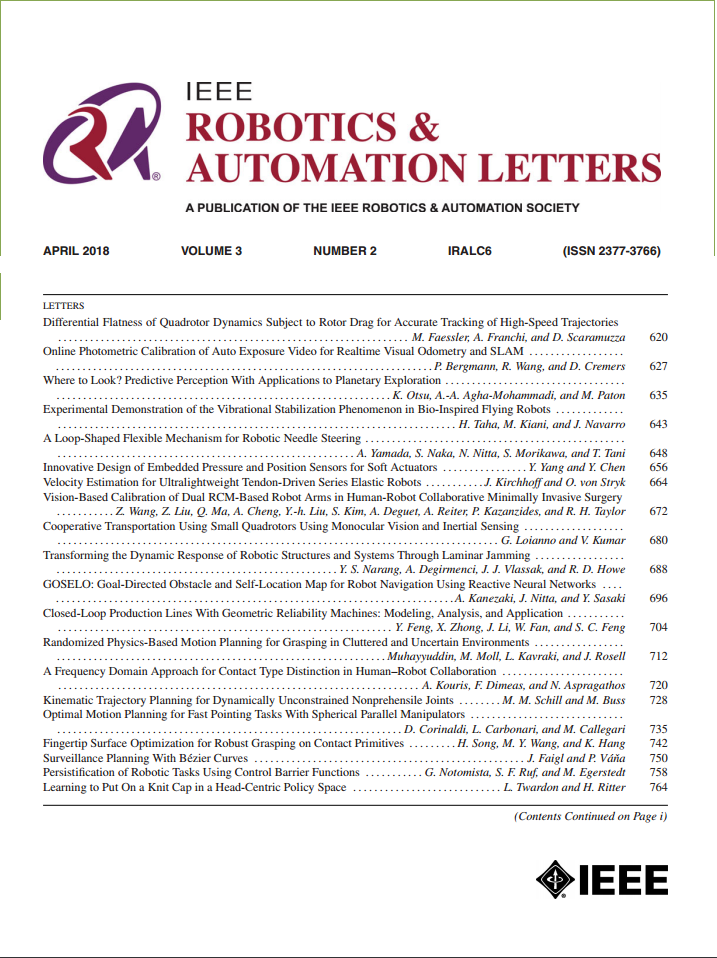Real-Time Geometric-Registration-Based Precision Localization for Autonomous Docking in Unstructured Factory Environment
IF 4.6
2区 计算机科学
Q2 ROBOTICS
引用次数: 0
Abstract
In factory distribution processes, autonomous mobile robots must dock precisely at base stations. However, this task is challenging due to the dynamic and unstructured nature of factory environments, as well as the sparse point clouds caused by sensor occlusions and distance limitations. To address these challenges, we propose a geometric registration approach designed to handle sparse point clouds in changing, unstructured settings. Our method utilizes the Hough transform to detect lines, describes the point cloud based on the relationships between these lines, filters out lines that do not correspond to the geometric features of the target base station, and estimates the pose of both the station and the robot using global registration techniques. We evaluated our system in four typical factory scenarios across 72 trials. Results show the robot achieved docking accuracy within基于几何配准的非结构化工厂环境下自主对接实时精确定位
在工厂配送过程中,自主移动机器人必须精确地停靠在基站。然而,由于工厂环境的动态性和非结构化性质,以及传感器遮挡和距离限制导致的稀疏点云,这项任务具有挑战性。为了解决这些挑战,我们提出了一种几何配准方法,旨在处理不断变化的非结构化设置中的稀疏点云。该方法利用霍夫变换检测直线,根据直线之间的关系描述点云,过滤掉不符合目标基站几何特征的直线,并使用全局配准技术估计基站和机器人的姿态。我们在四个典型的工厂场景中对系统进行了72次试验。结果表明,机器人在$\pm$5.06 mm和$\pm$ 1.11^{\circ}$范围内实现了对接精度,对接成功率为100%,并能正确识别目标车与周围物体。与现有方法相比,这意味着错误率降低了70%,成功率提高了86%。
本文章由计算机程序翻译,如有差异,请以英文原文为准。
求助全文
约1分钟内获得全文
求助全文
来源期刊

IEEE Robotics and Automation Letters
Computer Science-Computer Science Applications
CiteScore
9.60
自引率
15.40%
发文量
1428
期刊介绍:
The scope of this journal is to publish peer-reviewed articles that provide a timely and concise account of innovative research ideas and application results, reporting significant theoretical findings and application case studies in areas of robotics and automation.
 求助内容:
求助内容: 应助结果提醒方式:
应助结果提醒方式:


